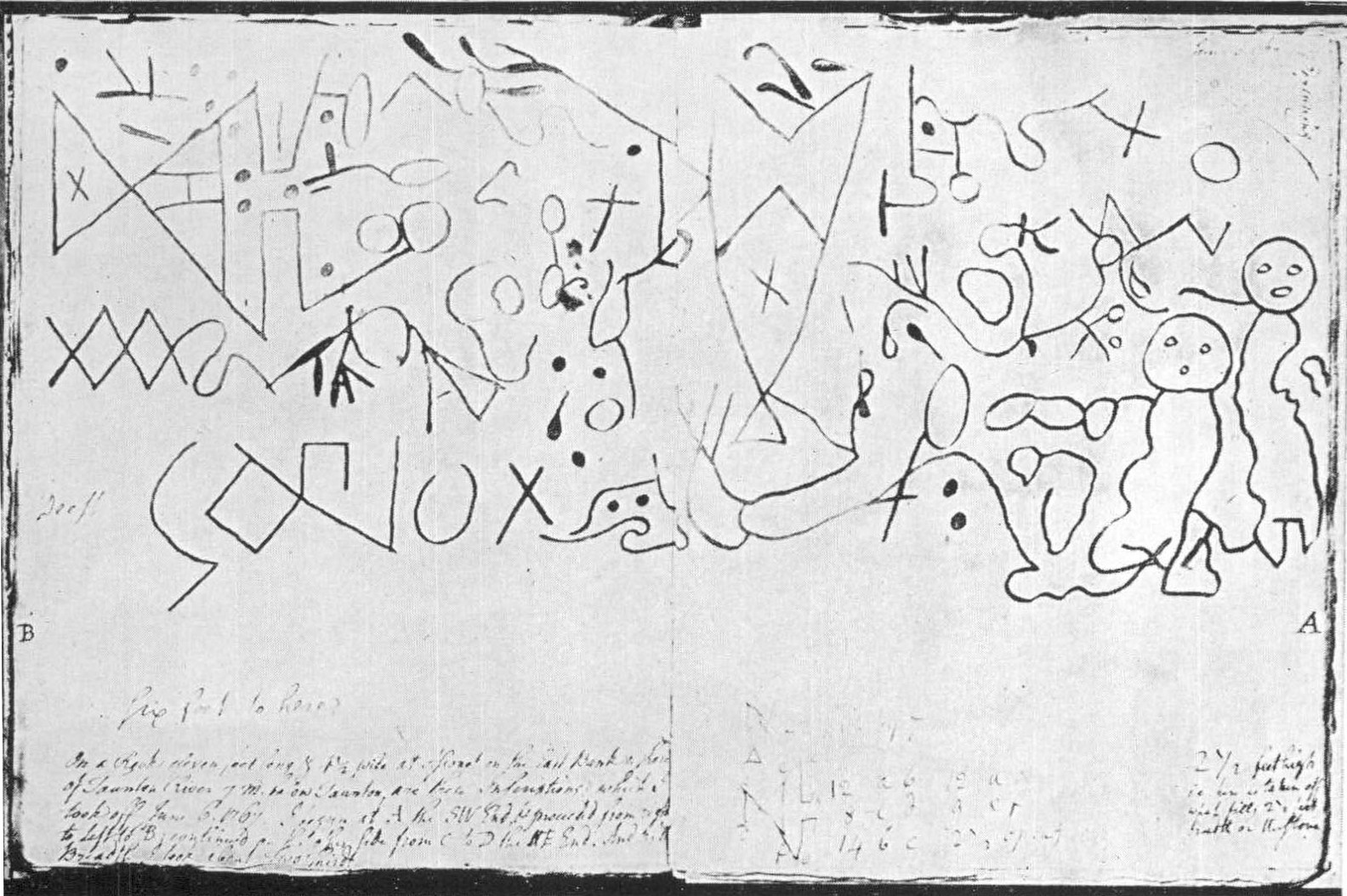Hunter on Dighton Rock in Middleboro, 19 May
On Saturday, 19 May, the Massachusetts Archaeological Society will host a special lecture by Douglas Hunter on “The Place of Stone: Dighton Rock and the Erasure of America’s Indigenous Past.”
Drawing on his book of the same name, Dr. Hunter will discuss the legacy and mythology behind a petroglyph-covered boulder found in the area that became Berkley:
First noticed by colonists in 1680, Dighton Rock in Massachusetts by the nineteenth century was one of the most famous and contested artifacts of American antiquity. This forty-ton boulder covered in petroglyphs has been the subject of endless speculation that defies its Native American origins. Hunter dissects almost four centuries of Dighton Rock’s misinterpretation, to reveal its larger role in colonization and the conceptualization of Indigenous peoples.Among the many New England scholars who studied the rock was the Rev. Dr. Ezra Stiles. In 1766, while living in Newport, Rhode Island, he saw a copy of a broadside about the boulder written by the Rev. Dr. Cotton Mather. (Other men who had written about the rock included Prof. John Winthrop of Harvard and Dr. William Douglass, best known for opposing smallpox inoculation and Mather’s other ideas.)
In June 1767 Stiles went to visit a man who lived half a mile from the rock. He used chalk to make the markings more distinct and then drew them in his journal, stating on 6 June: “Spent the forenoon in Decyphering about Two Thirds the Inscription, which I take to be in phoenician Letters & 3000 years old.”
Stiles returned in July for more investigation. He “washed & skrubbed the Rock with a Broom,” fighting the water level, before drawing more surfaces. The next month, two local men did the minister the favor of going out and collecting more drawings, measurements, and even what seems to be a casting of the scrapes in “the Phœnitian rock.”
Here’s one of Stiles’s drawings, courtesy of the Colonial Society of Massachusetts.
In 1768 the Swiss artist Pierre Eugène du Simitière visited Stiles on his way to settle in Philadelphia. He studied the material that the minister had collected. He looked at the characters on Mather’s broadside and and observed, “They are also totally different from the copy taken by Dr. Stiles.” Indeed, most or all of those researchers were seeing what they wanted to see.
Hunter’s talk about this history and what it shows about colonial New Englanders’ attitude toward the Natives around them will take place at the Robbins Museum of Archaeology, 17 Jackson Street in Middleboro, starting at 1:00 P.M. The program is free, but the society suggests a donation of $5 per person.


No comments:
Post a Comment